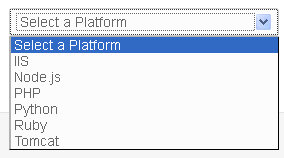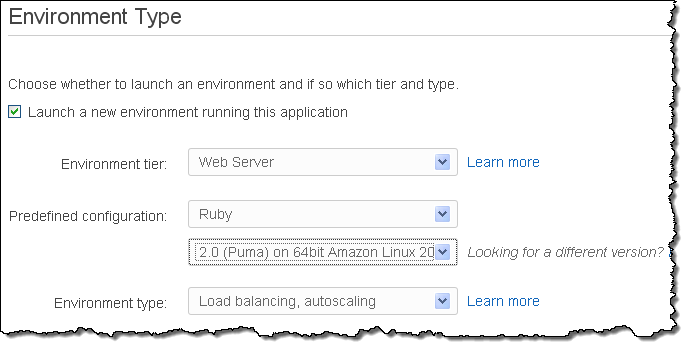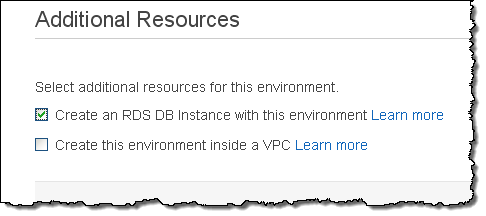AWS News Blog
AWS Elastic Beanstalk for Ruby 2
|
|
 AWS Elastic Beanstalk makes it easy for you to deploy and manage applications in the AWS cloud. After you upload your application, Elastic Beanstalk will provision, monitor, and scale capacity (Amazon EC2 instances), while also load balancing incoming requests across all of the healthy instances.
AWS Elastic Beanstalk makes it easy for you to deploy and manage applications in the AWS cloud. After you upload your application, Elastic Beanstalk will provision, monitor, and scale capacity (Amazon EC2 instances), while also load balancing incoming requests across all of the healthy instances.
Choice of Language and Runtime Environment
Your PHP, Python, Ruby, JavaScript, or .NET code can run in the appropriate Tomcat, Node.js, or IIS environment:

Your Elastic Beanstalk application can use the Amazon Relational Database Service (RDS) to create and manage SQL Server, MySQL, Oracle Database, and PostgreSQL databases.
Elastic Beanstalk chooses and sets sensible defaults for all of the AWS resources that it creates and these values will work fine for a wide variety of applications. Of course, you have the power to customize these settings by editing the appropriate configuration files. See the AWS Elastic Beanstalk Developer Guide for more information.
New Support for Ruby 2
Today we are making Elastic Beanstalk even more useful by adding support for Ruby 2.0 applications. Today’s launch gives you access to a very wide variety of new features.
Elastic Beanstalk for Ruby 2.0 comes with a choice of Passenger Standalone or Puma web server for Ruby with Nginx as a reverse proxy. This highly requested combination allows you to utilize all the virtual cores available on the instance type running your environment.
If you use Nginx, you can improve performance by configuring gzip compression and support for static files. Gzip compression reduces the size of the HTTP responses and can increase the apparent speed of your web application. Static file support lets Nginx serve static assets such as images and CSS style sheets in an optimized fashion.
To get started, simply create a new Elastic Beanstalk application and select the Ruby platform. This configuration will use the Puma web server by default:

Sample Ruby Applications
To help you to get started with Ruby 2 and Elastic Beanstalk, we have created some new samples.
The Sample Rails 4 application creates a simple pre-launch marketing site. Be sure to create an RDS database instance if you use this sample:

The Sample Sinatra application creates a simple welcome page within an environment set up to use the Sinatra domain-specific language (DSL).
And there you go! Ruby 2 support is available now and you can start using it today.
— Jeff;
